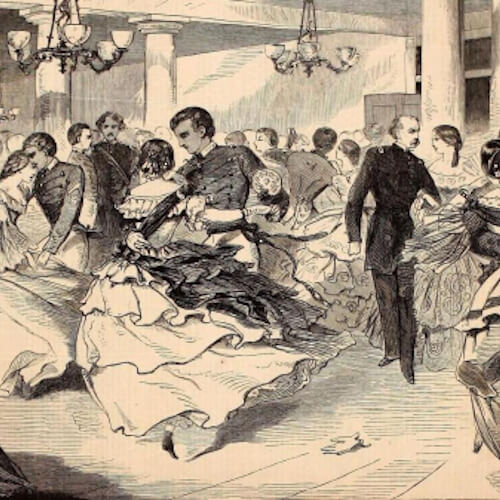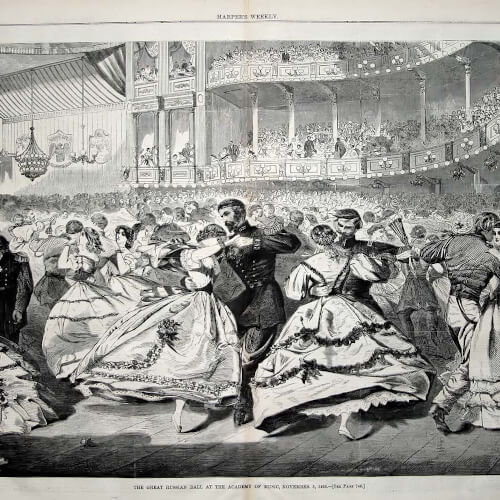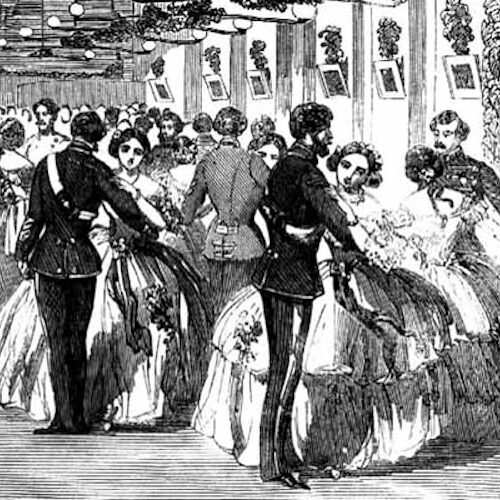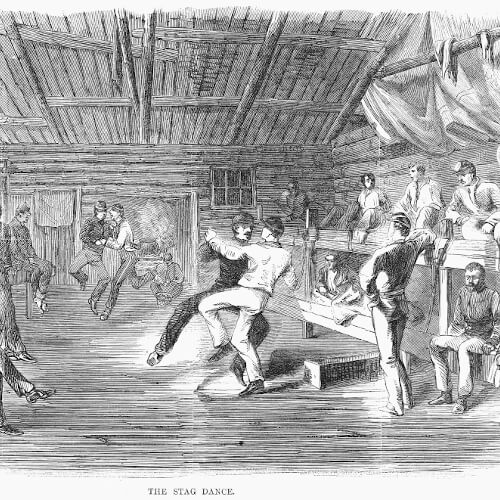Songs and Music of the Civil War
Exploring the music of 1860sCivil War Dancing
Before, during, and after the Civil War, dancing was one thing that was enjoyed by nearly everyone in America. It did not matter if you were northern, southern, rich, or poor, dancing was a to enjoy time away from daily chores and of course, the Civil War.
Period Dancing
During the time of the Civil War, dancing was much different than today’s dancing. There Electric Slide or viral TikTok dances, in fact, the dancing was much more social than personal. The objective was to socialize with others while dancing. Civil War-era dancing was done in various formations such as circles, squares or lines. While there were some “slow dances” such as a waltz, these were sometimes forbidden and often discouraged. As part of the social aspect of the dances, the idea was to dance with multiple partners and have different conversations.
Dances as social events
While dances and balls were important social events, there were also some strict rules that needed to be followed. For example, a gentleman would never walk up to a lady he had not been introduced to and ask for a dance. Before asking a lady to dance, a gentleman to first be introduced to the lady. Typically, the gentleman would ask a friend or relative of the lady for an introduction. This introduction would not only allow the gentleman to dance with the lady, but also speak to her in public or visit her home. Once introduced at a ball, the gentleman could then ask the lady for the “honor of a dance. Additionally, individuals were careful not to socialize with someone who was not in their social class.
Finding a partner
Ladies would never ask a gentleman to dance. If the lady wanted to dance with a particular man, she would have a friend discreetly ask the gentleman to dance. Dancing was not just for single men and women either. A gentleman could also ask a married woman to dance but first had to receive permission from her husband. In fact, a woman should not dance more than one dance with her husband. At the dances, a dance master and floor managers help organize and teach the steps of various dances.
Dancing in camp
Even soldiers would get to enjoy an occasional dance, especially during the long winter months when permanent camps were established. These dances were used to boost morale and provided a chance for some fun to combat the daily routine of camp life. In lieu of a formal band, soldiers would use simple instruments that they may have with them or bring in members of the fife and drum corps to help out. There are even stories of men dressing as women to fill in as dance partners.
Civil War Dance Ettiquette
Etiquette
- Never forget that ladies are to be first cared for, to have the best seats, the places of distinction, and are entitled in all cases to your courteous protection.
- No young lady should go to a ball, without the protection of a married lady, or an elderly gentleman.
- The customary honors of a bow and courtesy should be given at the commencement and conclusion of each dance.
- After dancing, a gentleman should invariably conduct a lady to a seat, unless she otherwise desires: and in fact, a lady should not be unattended, at any time in a public assembly.
Etiquette
- If you accompany your wife to a dancing party, be careful not to dance with her, except perhaps for the first set.
- A gentleman should not address a lady unless he has been properly introduced.
- In inviting a lady to dance, the words, “Will you honor me with your hand . . .” are used more now than “Will you give me the pleasure of dancing . . .”.
- Certain persons are appointed to act as floor managers. If you are entirely a stranger, it is to them you must apply for a partner.
Etiquette
- Be very careful how you refuse to dance with a gentleman. A prior engagement will, of course, excuse you but if you plead fatigue, do not dance the set with another.
- A gentleman introduced to a lady by a floor manager . . . should not be refused by the lady if she is not already engaged, for her refusal would be a breach of good manners.
- Dance quietly, do not kick and caper about, nor sway your body to and fro, dance only from the hips downwards.
- Lead a lady as lightly as you would tread a measure with a spirit of gossamer.
Etiquette
- The fall of a couple is not a frequent occurrence in a ballroom, but when it does happen it is almost always the man’s fault. Girls take much more naturally to the graceful movements of the dance, and are, besides, more often taught in childhood than their brothers.
- Never remain in a ballroom until all of the company have left, or even until the last set. It is ill-bred, and looks as if you are unaccustomed to such pleasures and so desirous to prolong each one. Leave while there are two or three sets to be danced.
- It is best to carry two pairs of gloves, as in contact with dark dresses, or in handling refreshments, you may soil a pair, and thus will be under the necessity of offering your hand covered in a soiled glove to some partner. You can slip unperceived from the room, change the soiled for a fresh pair, and then avoid that mortification.
Learn More
Videos
Vocabulary
Ball – a lavish dance requiring formal attire.
Ballroom dancing – any of a variety of social dances performed by couples in a ballroom
Barn dance – a dance party featuring country dancing often held in a barn on a farm
Etiquette – the customary code of polite behavior in society or among members of a particular profession or group.
Polka – a lively couple dance of Bohemian origin in duple time with a basic pattern of hop-step-close-step
Quadrilles – a square dance for four couples made up of five or six figures chiefly in ⁶/₈ and ²/₄ time
Reel – A lively dance, a reel; (also) a piece of music to which such a dance may be performed.
Social – of or relating to human society, the interaction of the individual and the group, or the welfare of human beings as members of society
Waltz – a ballroom dance in ³/₄ time with a strong accent on the first beat and a basic pattern of step-step-close




